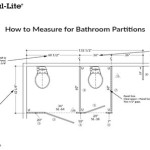Pretty Bathroom Sinks: A Guide to Style and Function
The bathroom sink, often referred to as a washbasin or lavatory, is a critical fixture in any bathroom. Beyond its purely functional role in hygiene, the sink contributes significantly to the overall aesthetic and style of the bathroom. Selecting a "pretty" bathroom sink involves carefully balancing aesthetic appeal with practical considerations such as size, material, installation method, and budget. This article explores the diverse range of bathroom sink designs and factors influencing their selection.
The term "pretty" is subjective, varying according to individual taste and the intended design theme of the bathroom. A sink considered visually appealing in a modern, minimalist bathroom might appear out of place in a traditional, farmhouse-style bathroom. Thus, understanding the desired aesthetic is the first, and arguably most important, step in selecting a suitable bathroom sink.
Types of Bathroom Sinks Based on Installation
The method of installation profoundly impacts the visual effect and practical considerations of a bathroom sink. Different installation types offer varying degrees of counter space, storage options, and ease of cleaning. Understanding these differences is crucial for informed decision-making.
Undermount Sinks: Undermount sinks are installed beneath the countertop, creating a seamless transition from the countertop surface to the basin. This installation method provides a clean, contemporary look and maximizes counter space. The absence of a rim around the sink makes cleaning easier, as crumbs and spills can be wiped directly into the basin. Undermount sinks typically require a solid countertop material, such as granite, quartz, or marble, to provide adequate support. The cost of both the sink and the countertop material can be higher compared to other installation types.
Vessel Sinks: Vessel sinks, also known as above-counter sinks, sit directly on top of the countertop. This type of sink offers a dramatic and artistic focal point for the bathroom. Vessel sinks are available in a wide range of shapes, sizes, and materials, including glass, ceramic, stone, and metal. Installation is relatively straightforward, requiring only a hole for the drain. However, vessel sinks can raise the overall height of the sink, potentially making them uncomfortable for shorter individuals or small children. Cleaning around the base of the vessel sink may also require more attention.
Pedestal Sinks: Pedestal sinks consist of a basin mounted on a freestanding pedestal. This classic design is ideal for smaller bathrooms where space is limited. Pedestal sinks offer a simple and elegant look, concealing plumbing underneath the basin. However, they provide no counter space or storage. Pedestal sinks are available in a variety of styles, from traditional to modern, catering to a broad range of aesthetic preferences.
Wall-Mounted Sinks: Wall-mounted sinks are attached directly to the wall, leaving the space beneath the sink open. This creates a minimalist and airy feel, making the bathroom appear more spacious. Wall-mounted sinks are particularly suitable for accessible bathrooms, as they can be installed at a height that accommodates wheelchair users. The plumbing is typically exposed, although it can be concealed with a decorative shroud. Wall-mounted sinks require adequate wall support and professional installation.
Console Sinks: Console sinks combine the features of a pedestal sink and a vanity. They consist of a basin supported by legs, often with a shelf or railing for storage. Console sinks offer a balance of style and functionality, providing some storage space while maintaining an open and airy feel. They are available in a variety of styles, from traditional to modern, and can be customized with different leg finishes and shelf materials.
Vanity Sinks: Vanity sinks are integrated into a cabinet or vanity unit, providing ample storage space for toiletries and other bathroom essentials. This type of sink is ideal for maximizing functionality and organization in larger bathrooms. Vanity sinks are available in a wide range of styles, sizes, and materials, allowing for customization to suit any bathroom design. The countertop material can be integrated with the sink or installed separately. The size of the vanity sink should be carefully considered to ensure it does not overwhelm the bathroom.
Materials Used in Bathroom Sink Construction
The material of a bathroom sink influences its durability, appearance, and maintenance requirements. Each material possesses unique characteristics that should be considered when making a selection.
Ceramic: Ceramic, including porcelain and vitreous china, is a popular choice for bathroom sinks due to its durability, stain resistance, and affordability. Ceramic sinks are non-porous, making them easy to clean and resistant to bacteria growth. They are available in a wide range of colors and styles, from classic white to bold, contemporary designs. While ceramic sinks are generally durable, they can chip or crack if subjected to impact.
Glass: Glass sinks offer a unique and modern aesthetic. They are typically made from tempered glass, which is highly durable and resistant to shattering. Glass sinks can be transparent, translucent, or opaque, and they are available in a variety of colors and textures. Glass sinks require careful cleaning to prevent water spots and streaks. They can also be more susceptible to scratches than other materials.
Stone: Stone sinks, such as granite, marble, and travertine, offer a luxurious and natural look. Each stone sink is unique, with variations in color, pattern, and texture. Stone sinks are durable and resistant to heat, but they can be porous and require regular sealing to prevent staining. Marble sinks are particularly susceptible to etching from acidic substances.
Metal: Metal sinks, such as stainless steel, copper, and bronze, offer a sleek and contemporary aesthetic. Stainless steel sinks are durable, stain-resistant, and easy to clean. Copper sinks possess antimicrobial properties and develop a unique patina over time. Bronze sinks offer a warm and rustic look. Metal sinks can be noisy, and they may require special cleaning products to maintain their shine.
Solid Surface: Solid surface materials, such as acrylic and polyester resins, offer a seamless and non-porous surface. Solid surface sinks are durable, stain-resistant, and easy to clean. They are available in a wide range of colors and patterns, and they can be molded into various shapes and sizes. Solid surface sinks are also repairable, making them a long-lasting option.
Aesthetic Considerations and Style Integration
Beyond the functional and practical aspects, the aesthetic appeal of a bathroom sink plays a crucial role in enhancing the overall design of the bathroom. Selecting a sink that complements the existing style and color palette is essential for creating a cohesive and visually pleasing space.
Color and Finish: The color and finish of the bathroom sink should harmonize with the other elements in the bathroom, such as the countertops, tiles, and fixtures. White sinks are a classic and versatile choice that complements most bathroom designs. However, colored sinks can add a pop of personality and visual interest. Matte finishes offer a subtle and sophisticated look, while glossy finishes provide a more reflective and contemporary aesthetic. Speciality finishes like hammered copper or brushed nickel can add texture and character.
Shape and Style: The shape and style of the bathroom sink should align with the overall design theme of the bathroom. Round sinks offer a soft and organic look, while square sinks provide a more modern and geometric aesthetic. Rectangular sinks are versatile and can be used in both traditional and contemporary bathrooms. The style of the sink, whether it is traditional, modern, farmhouse, or minimalist, should be consistent with the other fixtures and accessories in the bathroom.
Faucet Compatibility: The choice of faucet is closely linked to the sink selection. The faucet should complement the style and finish of the sink, and it should be properly sized and positioned to prevent splashing. Some sinks have pre-drilled holes for faucets, while others require a deck-mounted faucet. The type of faucet, such as a single-handle, double-handle, or wall-mounted faucet, should be carefully considered to ensure compatibility with the sink.
Scale and Proportion: The size of the bathroom sink should be proportional to the size of the bathroom and the vanity or countertop. A large sink in a small bathroom can overwhelm the space, while a small sink in a large bathroom can look insignificant. The height of the sink should also be comfortable for all users. Consider the depth of the basin, as a shallow basin may result in splashing, while a deep basin may be difficult to reach for some individuals.
Ultimately, selecting a "pretty" bathroom sink involves a careful assessment of personal preferences, practical needs, and the overall design aesthetic of the bathroom. By considering the installation type, materials, and aesthetic considerations, it is possible to find a sink that is both visually appealing and functionally appropriate. The sink should integrate seamlessly with the bathroom design, enhancing its overall aesthetic and creating a comfortable and inviting space.

8 Beautiful Double Bathroom Vanity Ideas Oppein

20 Best Bathroom Sink Design Ideas Stylish Designer Sinks

51 Bathroom Sinks That Are Overflowing With Stylistic Charm

51 Bathroom Sinks That Are Overflowing With Stylistic Charm

40 Bathroom Vanities You Ll Love For Every Style

51 Bathroom Sinks That Are Overflowing With Stylistic Charm

The Right Vessel Sink Can Create Perfect Contemporary Bathroom Beautiful Homes

Beautiful Bathroom Vanity Ideas Forbes Home

51 Bathroom Sinks That Are Overflowing With Stylistic Charm

20 Best Bathroom Sink Ideas To Elevate Your Space
Related Posts







